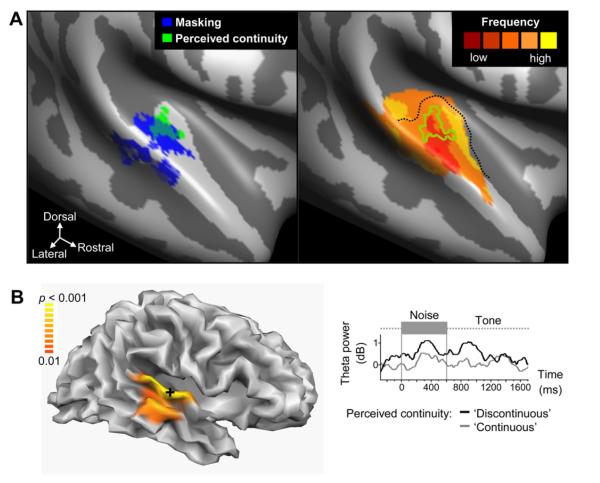Fig. 6.
Neural correlates of auditory continuity in human auditory cortex. (A), fMRI group results rendered on an unfolded average cortex representation (adapted from Riecke et al., 2007). Left: Middle superior-temporal gyrus and Heschl’s gyrus (HG) in the right auditory cortex (AC) appear to play a role in the masking of gaps in tones and the hearing of continuity illusions of these tones respectively. Hemodynamic activity in these regions was related to the masking strength (dark blue) or the actual illusion strength (light green). Right: The illusion-related region (green outline) on HG (dotted line) was situated in a medial portion of a mirror-symmetric map of frequency sensitivity suggesting that the underlying primary auditory cortex processes are involved in perceptual restoration. (B) Distributed EEG source modeling group results obtained with the same behavioral paradigm rendered on a folded average cortex representation (adapted from Riecke et al., 2009). Left: Theta oscillations in central portions of the right AC appear to be relevant for hearing continuity illusions (see shading near cross). Right: Theta power in these regions (see cross on the left) was suppressed during and also around the masked gap interval when listeners reported continuity illusions compared to true discontinuity of the same ambiguous stimulus.

